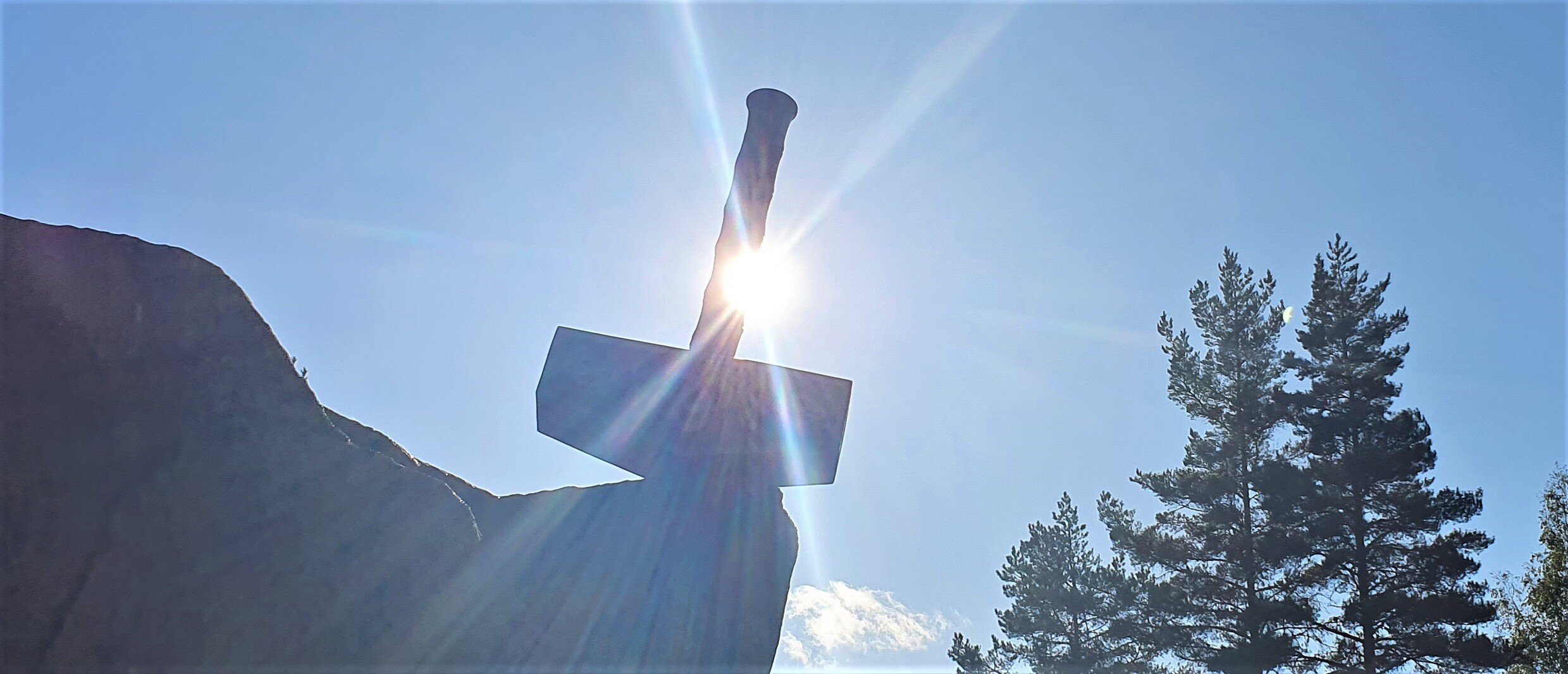MJÖLNIR by Tyr Neilsen
/norwegian glima federation mjölnir
Mjölnir is the sacred hammer of Thor, the Norse God of thunder. Mjölnir comes from the Old Norse word Mjǫlnir, which means "the painter and the crusher of dust", and according to Norse Mythology, it is one of the most fearsome and powerful weapons in existence.
Mjölnir was given to Thor by the Norse God Loki as compensation after Loki tricked the dwarf Eitri (or Sindri) and his brother Brokkr to forge the most beautiful objects in the 9 Worlds. Because of Loki's interference in the forging process, the handle to Mjölnir became shorter than planned so that it can only be weilded with one hand, but Mjölnir is so awesome that when Thor weilds it, he can protect the gods.
10TH CENTURY MJÖLNIR PENDANT WITH GOLD-PLATING 4.6 CM FOUND AT ÖLAND, SWEDEN
Mjölnir is often interpreted as a weapon, as it is described as something so powerful it could level mountains. Thor could decide what power the hammer would hit with, and when he aimed and threw Mjölnir, it always hit the target. No matter how far Thor threw Mjölnir, the hammer always returned to its owner.
Then he gave the hammer to Thor, and said that Thor might smite as hard as he desired, whatsoever might be before him, and the hammer would not fail; and if he threw it at anything, it would never miss, and never fly so far as not to return to his hand; and if be desired, he might keep it in his sark, it was so small; but indeed it was a flaw in the hammer that the fore-haft was somewhat short. — The Prose Edda, translated by Arthur Gilchrist Brodeur (1916).
some of the many different types of Mjölnir artefacts from the viking age
The Norse people entrusted Mjölnir with their protection, and 50 different Viking Age Mjölnir amulets have been found, mostly around Norway, Sweden and Denmark. There are two main types of Mjölnir amulet, one is a hammer attached to a ring (mostly from the 8th and 9th century) the other is used as a pendant (mostly from the 10th and 11th century) made of steel or silver, and some of which are decorated.
9th century Iron Thor’s hammer ring from Birka (Photo: Ola Myrin, SHMM: CC BY 2.5 SE)
Very often there are sacred spiritual symbols on these amulets. The 3 main symbols on the Mjölnir amulets mean infinity/eternity. The first is a 3 sided intertwined infinty / eternity symbol. The second is the simple 2 sided figure eight eternity/infinity symbol . The third is the figure eight infinity symbol intertwined in a circle, which also means infinity completeness. The circle also symbolizes promises (oaths) such as marriage.
norwegian glima federation mjölnir
Thor's hammer is not only a symbol of strength, it is also a phallic fertility symbol and most Mjölnir amulets have been found in the graves of women from the Viking age. In Norwegian mythology, the myth of Trym is a poem about Mjölnir being stolen from Thor. The God of thunder had to disguise himself as the bride and place himself in great danger in order to get Mjölnir back.
Mjölnir was so important to the gods, they had to save Thor's hammer no matter the cost. The myth of Trym tells us that Mjölnir is more than simply a weapon but also extremely important to Norse ceremonies. Mjölnir as a sacred symbol was used in the Norse marriage cermony and was placed on the lap of the bride, blessing the sexuality between woman and man.
10th century Mjölnir Amulet found in Ödeshög/Östergötland in Sweden
Mjölnir is depicted on many image stones and runestones, with several runestones inscriptions asking Thor to "hallow" or protect the memorial or artefact.
Stenkvista runestone in Södermanland, Sweden










